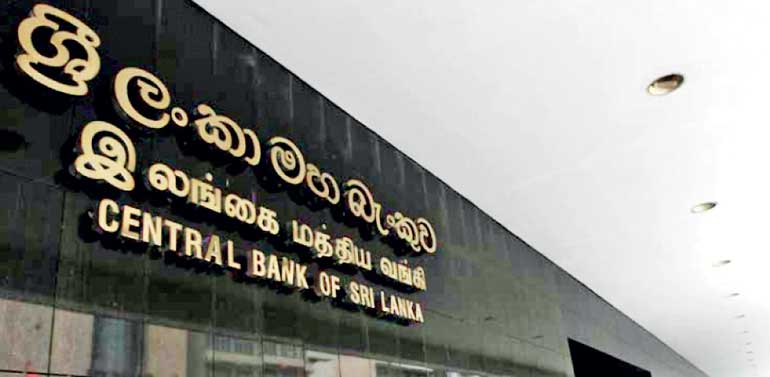Saturday Dec 20, 2025
Saturday Dec 20, 2025
Tuesday, 7 November 2017 00:00 - - {{hitsCtrl.values.hits}}

Interest rates remain high, but under control. Thanks to tightened monetary policy stance of the Central Bank. From a business point of view, they are too high: Investment financed through bank credit borrowed at floating rates has become penalised, while financing new investment through bank credit is difficult to afford.
From a macroeconomic point of view, there has been unwarranted increase in aggregate demand in terms of both public and private spending – the so-called “living beyond means” problem. As a result public debt and private credit have been rising alarmingly, while there have been inflationary pressure mounting in the economy. Therefore, monetary tightening seems to be the appropriate policy stance of the Central Bank.
Value of money and inflation-targeting
Thus, it is not surprising that the Central Bank has to adopt tightened monetary policy even if it holds business environment unfriendly. After all, protecting the ‘value of money’ is the prime objective of central banking. This objective has to be realised through price stability and system stability. Under the given circumstances, the result is the higher interest rate regime.
In focusing even more on the stability issue, the Central Bank has also shifted from ‘monetary targeting’ to ‘inflation targeting’ in its approach to monetary policy. This means that, instead of targeting the future money stock, now the Central Bank is targeting the future inflation rate. When inflation is caused by many demand-pull and cost-push factors that are external to the purview and authority of the Central Bank, inflation-targeting is “a promise to be the sole saviour from every evil”.
The biggest enemy to inflation-targeting has always been its own neighbour just round the corner – the government budget which habitually used to bring about promises from even nowhere “to spend from unavailable resources”. If the Treasury has entered into a covenant with the Central Bank to give up the conduct of all evils, it is something commendable.
Living beyond means
Now let us go little deeper: Aggregate demand of an economy is comprised of private consumption, private investment, government spending, and net exports. Because credit expansion in an economy is captured through aggregate demand trends, interest rates are important for short-term ups and downs in aggregate demand. That is why interest rate is an effective tool to control aggregate demand and, thereby inflationary pressure.
Evidently, Sri Lanka’s aggregate demand movements since the end of the war did not seem to be healthy because it has not been projecting the enhanced ‘productive strength’ of the economy. What we have seen through the rising aggregate demand is that the easy monetary policy has fuelled credit expansion for private consumption spending mostly on durables and leisure, and private investment spending mostly on real estate and the recent construction boom.
Government spending has also increased alarmingly bringing the country to a near debt crisis. Governments, which have the legitimate power to spend someone else’ money, do not have to check on interest rate movements. Nevertheless, they are usually happy to have easy money at cheap interest rates. Apart from the government’s own borrowings, our loss-making and debt-ridden public enterprises also borrow with government’s bank guarantees, and mostly from the government banks. As far as net exports are concerned, imports have been rising faster than exports bringing Sri Lanka’s net exports to a critical state of trade deficit.
What we are unable to observe here is the inadequate credit expansion towards ‘productive’ activities that are typically categorised under the title ‘tradable’ production. This has been clearly seen by the dismal performance in exports. Credit expansion and the resulting increase in aggregate demand are mostly for consumption-oriented spending by the households, for non-productive spending by the government, and for investment in non-tradable activities by the private sector. This type of increase in aggregate demand obviously needs to be contained in order to keep both total debt and inflation under control.
Penalty on tradable production
The issue now is that a tight monetary policy stance is required to contain aggregate demand, but it would penalise any credit expansion into potential tradable production together with the non-tradable production; apparently the medicine has harmful side effects.
Why so much concern about ‘tradable’ production and why the difference between the two is so important? This leads us to a different story beyond macroeconomics to the subject area of development economics: The output of tradable production activities has the potential to be traded internationally which is not a character of non-tradable activities. Therefore, government spending-led economic activities, non-manufacturing industrial activities, and many services are non-tradable.
However, these production activities are not alternatives to tradable production, but complementary activities. For this reason, economic growth based on non-tradable production cannot be sustained without corresponding expansion in tradable sector. Post-war growth spurt in Sri Lanka has been led more by the expansion in non-tradable sector than tradable sector so that it was bound to slow down as it actually did.
The unwarranted expansion in non-tradable sector, perhaps, depends on how we perceive it; when tradable sector experienced sluggish growth performance, the magnitude of the performing non-tradable sector looks even bigger.
The expansion of the tradable sector which generates long-term returns, requires long-term investment. As the reform process has not yet been effective and the investor confidence has not yet been built up even after the end of the war, genuine long-term investment do not appear to have received the required policy and political climate. The issue is much more than an interest rate problem.
Which way now?
Unless and until the structural problem of the economy that penalises the tradable sector is corrected, the dilemma will continue to remain. Even if easy monetary policy is adopted, again the same type of aggregate demand will rise exacerbating the debt and inflation problem. It is contradictory to the Central Bank’s primary objective and the current monetary approach.
The business environment is not right for lower interest rates, but obviously the higher interest rate will have a bearing impact on private investment. Development banking might be another option, to keep all issues under carpet and to continue as ‘business usual’ because It can provide cheap and long-term credit to domestic investors in particular; but it would not solve the fundamental issues.
What should be the choice of the government that you would like to see?
(Dr. Sirimal Abeyratne is attached to the University of Colombo.)